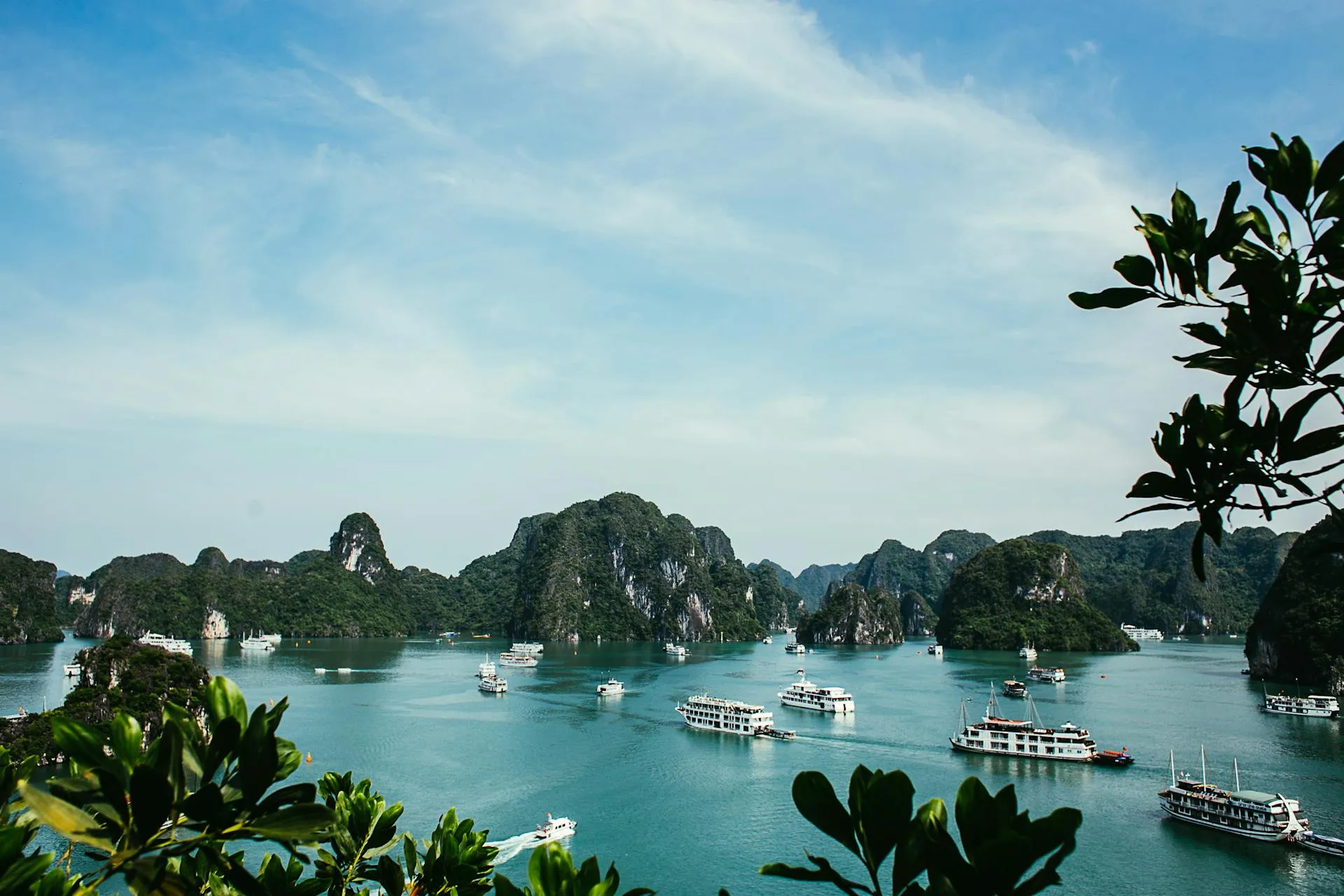
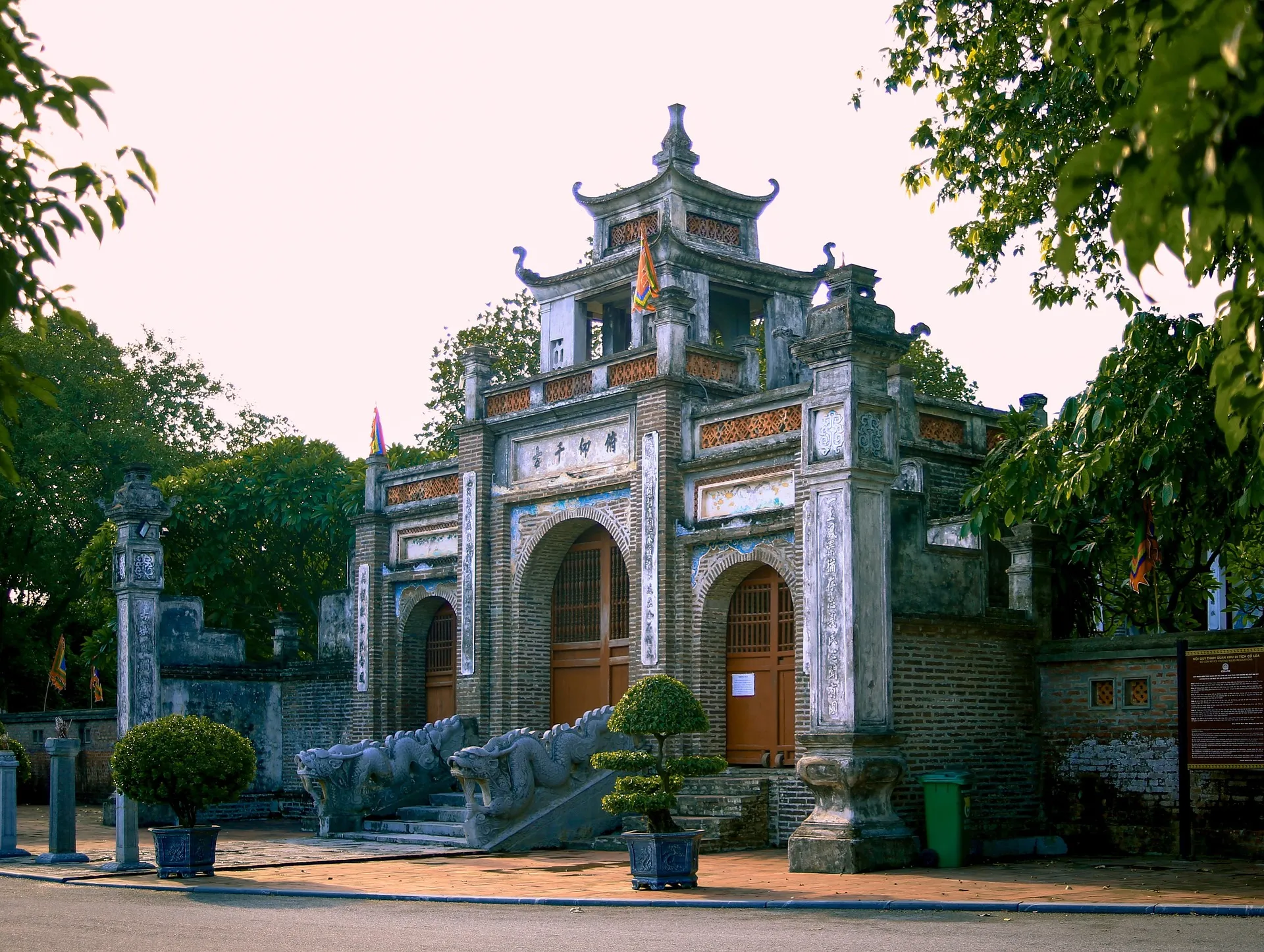
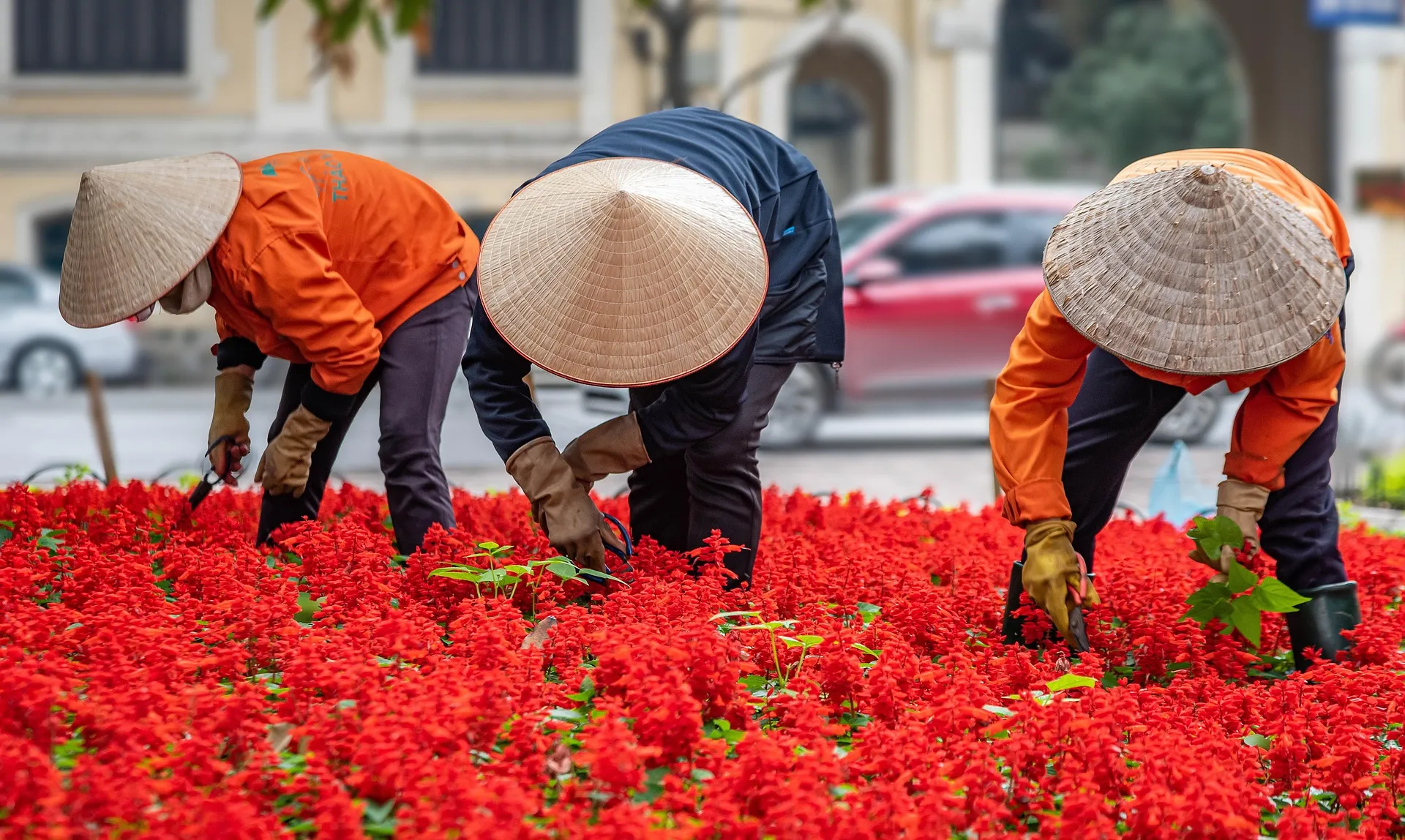
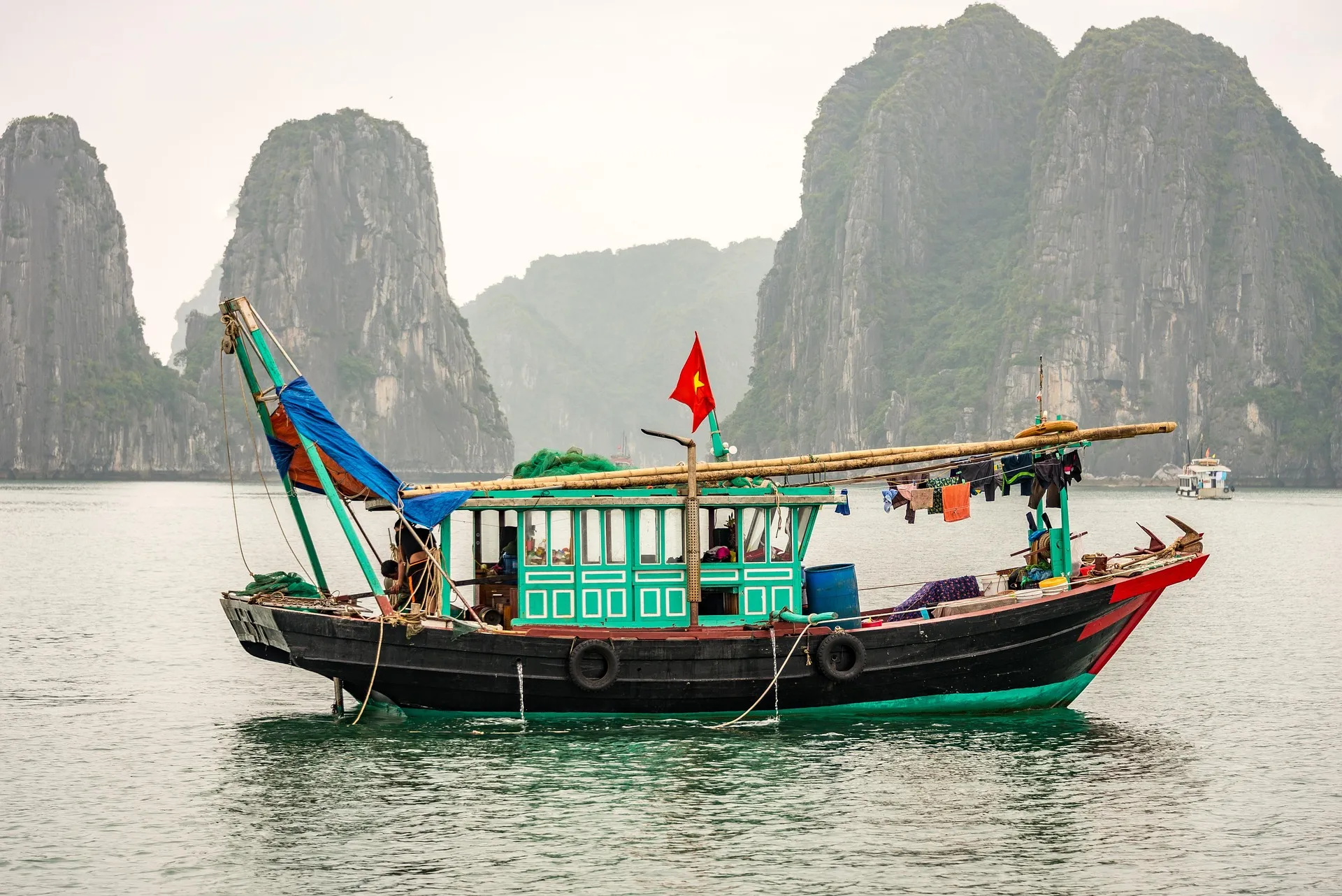
vietnam visa for australian
Select Visa Type
30 Days single Entry
Tourist e-Visa
single Entry
Validity 90 Days
Stay 30 Days
Get on
26 Aug 2025
vietnam Visa Requirements
Passport
Photo
How vietnam Visa Process Works
Step 1: Apply with Visa Centre Au
fill details & upload required documents via Visa Centre Au.
Step 2: Documents Verification
Your documents will Verified by our advisor. We will contact you if any further information required.
Step 3: Your Visa Gets Processed
eVisa Process
- We will submit your documents to the immigration department.
Embassy visa Process
- visa advisor will be assigned to your Application and assist with your Application and appointment booking.
- Attend visa appointment.
- Submit visa appointment to the immigration.
Step 4: Get Your Approved Visa on
You will receive an email notification of your visa approval and you can download from your Visa Centre Au account.
Reviews & Ratings
4.5/5
Based on 19 reviews
5
100%
4
0%
3
0%
2
0%
1
0%
On Time
Easy
Fast
Reliable
TrustWorthy
Cherrice Blizzard
australia
Immigration site had crashed
I had read on FB that the immigration site had crashed and there were continual issues when i wanted to do my 60 visa. I contacted Visa Centre Au and they processed my visa, no stress, no issues, simple process. I was even able to ring them to discuss my concerns. Thank you Visa Centre Au 🙏 😊

Amisha Dahal
australia
Got visa within a week
Got visa within a week. Very helpful. I will definitely recommend to others as well.

Prashansha Karki
australia
Fast and easy service
Fast and easy service, got a visa in couple of hours. Highly recommended!!

Soney S
australia
Reliable and great service
Very satisfied with the customer service provided recently as the visa was granted within a week. Highly recommended visa service centre if you looking for a professional, trustworthy, reliable, and responsive provider, who helps with your processing overall and clears all your queries with quick responses and great support👍Thankful to Mr Prem, you have been a great help.

Sujan Khatri
nepal
Great staff and easy process
Had a great experience with Visa Centre AU, the process was easier and the team was very responsive and giving me update on each part of the application. Love the service.
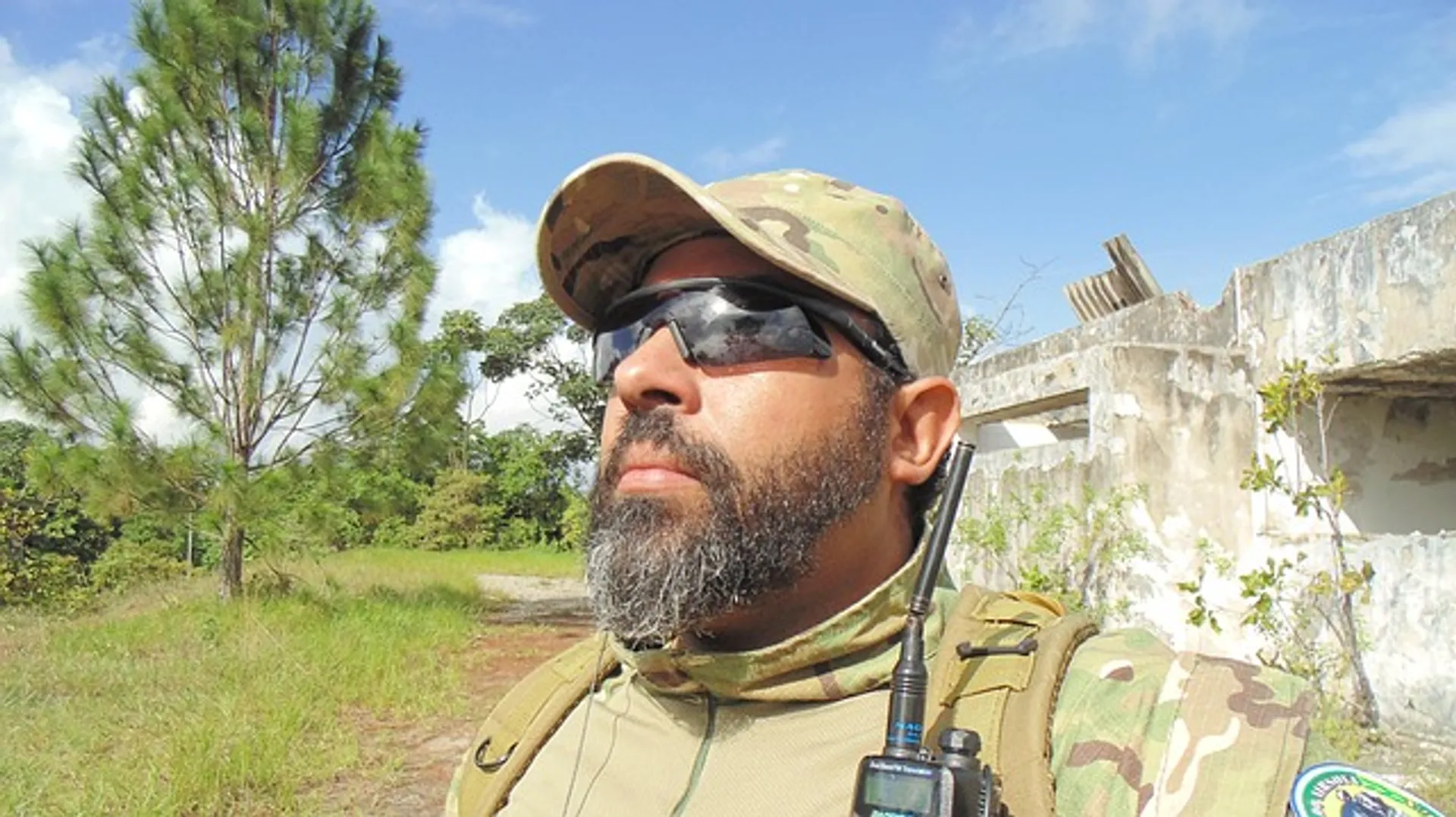
Sujan Paudel
australia
Thanks so much to Visa centre Au team…
Thanks so much to Visa centre Au team for all the help. Applying visa from them was really easy and they helped me every step of the way guiding me. My overall experience with the team was amazing and i highly recommend working with them.

Sunita Maharjan
nepal
Easily approachable and very reliable.
Easily approachable and very reliable.

Osama Ahmed Khan
pakistan
Very professional
Very professional Applied visa on 19th and received a day after on 21th Well satisfied 🥰🥰
Alina Chauhan
australia
Very helpful and professional team
Very helpful and professional team. Highly recommended.
Madhu Limbu
australia
Friendly and Convenient
Friendly support. All we had to do was provide the pics of our documents. Very convenient

Nishant Shrestha
nepal
Very Professional
Thank u so much visa centre AU for being so much helpful n understanding in every step of our visa process for thailand. I m very much pleased with ur effort and service. I am very much happy from ur service n Il be recommending my friends n family for choosing ur center. Thank u😍😊😊

Hawraa S
australia
I was in a tight situation but with…
I was in a tight situation but with visa centre he made my life easier Best team I've worked with Deserved the 5 stars

Roshani Thapa
australia
I want to thank visa centre Au for…
I want to thank visa centre Au for exceptional performance for solving visa issues . Greatly appreciate what you have done for me . I am grateful for ur valuable advice .most important is thank you for supporting us during crisis situations. Truly grateful for valuable service and emotional support.

kamal maharan
australia
Thank you for making my life easy
Thank you for making my life easy. As promised Bali visa in 2 days. Best in the business. Very much genuine, they are there to help people and make our life easy while traveling...really great service...once again thank you guys so so much.

Sunny Shrestha
australia
Visa granted in 4 days
I recently applied for a Japan visa through the Visa Centre, and I’m very pleased with the experience. The process was smooth, efficient, and professionally handled. My visa was granted without any issues. Highly recommend their service!

Manik Guragain
thailand
I booked a longtail boat to Phi Phi
I booked a longtail boat to Phi Phi Island through Visa Centre AU, and honestly, it was one of the best decisions I made on my trip. The entire experience—from booking to the actual tour—was smooth and hassle-free. The water was crystal clear, the views were straight out of a postcard, and the peaceful ride on the longtail boat made it feel like a private escape to paradise. Big thanks to the team for their quick response and friendly service. They made everything so easy. If you’re planning a trip to Thailand and want something truly special, I highly recommend booking through them. I’ll 100% be reaching out again for my next adventure. Don’t miss this—it’s worth every cent!
vietnam Visa Rejection Reasons
Factors than can get your visa rejected
Expired Passport
Applying with a passport that has expired or expires within 6 months.
Insufficient Funds
Failing to demonstrate enough financial resources to support your stay.
Criminal Record
Having a criminal history that disqualifies you from obtaining a visa.
Previous Visa Violations
Having overstayed or violated the terms of a previous visa.
Frequently Asked Questions
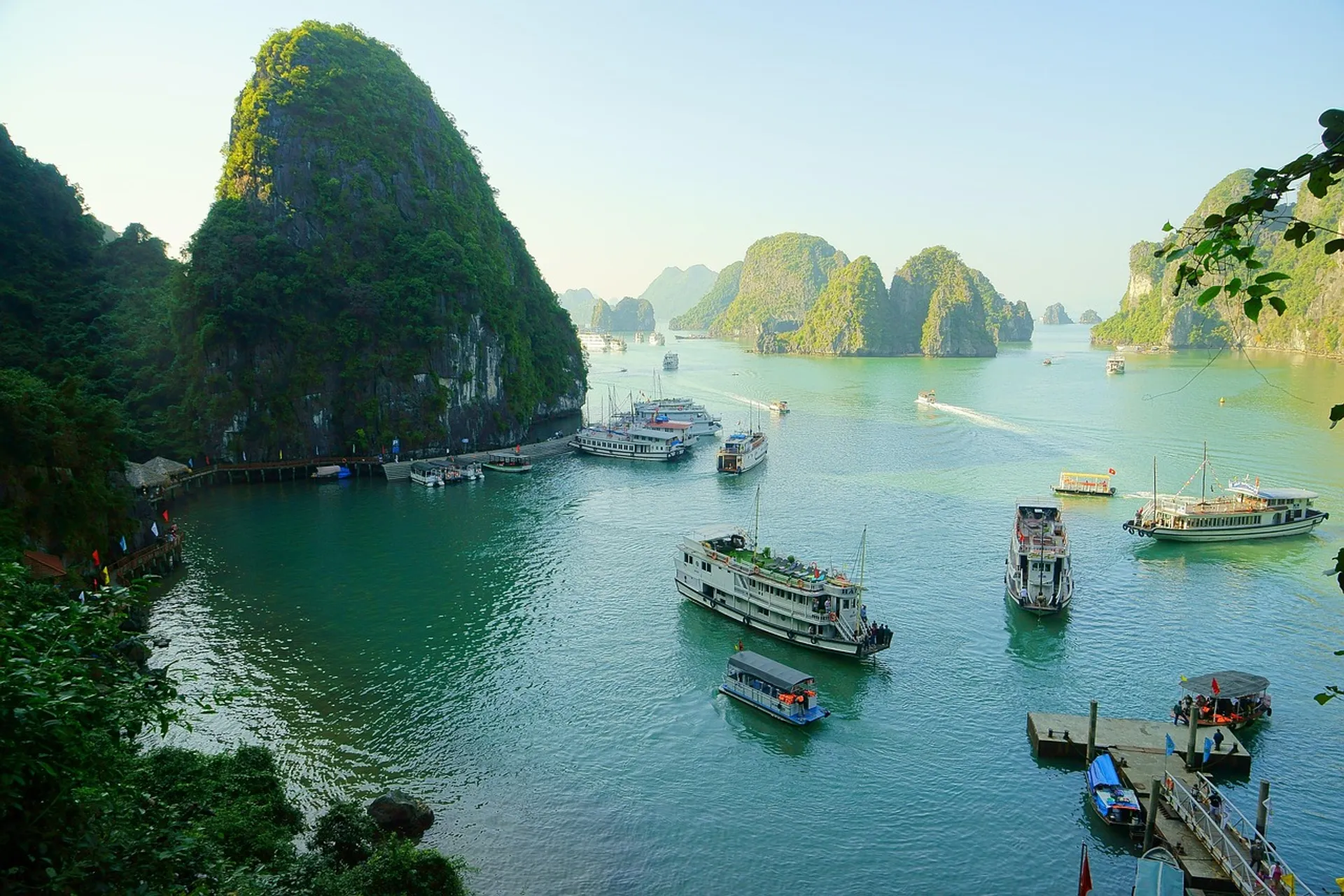
Vietnam's Evolving Visa Policies: A Comprehensive Guide for Australian Travellers on the New 45-Day Waiver and Beyond
1. Executive Summary: Navigating Vietnam's Visa Landscape for Australian Travellers
Vietnam is actively engaged in a strategic overhaul of its visa policies, a concerted effort designed to invigorate its tourism sector and attract high-quality human capital. These reforms are manifested through recent governmental resolutions that extend stay durations and broaden the eligibility for electronic visas. Such changes are not merely administrative adjustments but represent a broader national commitment to enhancing global connectivity and fostering economic development.
For Australian citizens, a critical clarification must be made at the outset: Australian passport holders are not included in the new 45-day visa waiver granted to 12 specific European countries, nor are they beneficiaries of any existing unilateral visa exemption scheme for Vietnam. This distinction is of paramount importance for any Australian-centric visa service, as it directly manages expectations and provides accurate, actionable guidance. Without this immediate clarity, Australian travelers might misinterpret general news about visa changes, potentially leading to significant travel complications. Therefore, directing Australian travelers to their specific and relevant visa pathways is essential.
A valid visa remains a mandatory requirement for all Australian passport holders intending to enter Vietnam, irrespective of their purpose of travel, whether for tourism, business, or visiting relatives. Among the available options, the Vietnam e-visa, which permits stays of up to 90 days with either single or multiple entries, stands out as the most convenient and highly recommended pathway for Australian travelers.
This comprehensive report aims to detail Vietnam's latest visa policies, thoroughly explain all available visa options pertinent to Australians, outline essential entry requirements, and furnish crucial practical advice to facilitate a smooth and enjoyable travel experience. The objective is to equip entities like Visa Centre Au with all necessary information to serve as an authoritative resource for Australian travelers planning a visit to Vietnam.
2. Vietnam's Latest Visa Policy Update: The 45-Day Waiver Explained
This section meticulously examines Vietnam's recent governmental resolutions, drawing clear distinctions between various visa exemption policies and clarifying their specific applicability and scope.
2.1. Official Announcement and Resolution Details: A Boost for Tourism
On August 8, 2025, the Vietnamese Government officially announced Resolution No. 229/NQ-CP, a key component of its ongoing tourism stimulus program. This resolution introduces visa exemptions for citizens of 12 designated countries, permitting them to remain in Vietnam for up to 45 days from their date of entry, specifically for tourism purposes.
This measure is scheduled to become effective on August 15, 2025, and is slated to remain in force for a substantial period, until August 14, 2028. The explicit establishment of these start and end dates, spanning three years, indicates a deliberate and sustained commitment by Vietnam to foster tourism growth from these particular European markets. This is not a fleeting, short-term adjustment but a policy framework designed to deliver a lasting impact, reflecting confidence in the long-term recovery and expansion of the nation's tourism sector. The exemption applies universally to citizens of these countries, irrespective of their passport type, provided they adhere to Vietnam's general entry conditions. The overarching goal of this policy is to significantly boost tourist arrivals from these specific source markets.
For certain nations, such as Poland, the Czech Republic, and Switzerland, this new resolution effectively replaces previous visa exemptions. For instance, Resolution No. 11/NQ-CP, which was dated January 15, 2025, and provided exemptions for these countries, will cease to be valid from August 15, 2025. The expiration of an older resolution concurrent with the introduction of a new one for the same countries suggests an ongoing process of policy refinement and consolidation. This points to a dynamic regulatory environment where earlier, potentially less extensive, exemptions are being superseded by more generous and standardized provisions for specific groups of nations, thereby streamlining the overall policy framework and potentially simplifying administrative procedures over time.
2.2. Countries Benefiting from the New 45-Day Visa Waiver (Resolution 229/NQ-CP)
The 12 countries newly granted the 45-day visa exemption under Resolution No. 229/NQ-CP are: Belgium, Bulgaria, Croatia, the Czech Republic, Hungary, Luxembourg, the Netherlands, Poland, Romania, Slovakia, Slovenia, and Switzerland. Citizens from these nations are permitted to stay for up to 45 days from their entry date for tourism purposes, regardless of their passport type, provided they fulfill Vietnam's standard entry requirements.
It is imperative to distinguish this recent policy from an earlier, separate extension of stay durations for citizens of 13 other countries. Effective August 15, 2023, Vietnam had already extended the unilateral visa exemption period from 15 days to 45 days for citizens of: Germany, France, Italy, Spain, the United Kingdom, Russia, Japan, the Republic of Korea, Denmark, Sweden, Norway, Finland, and Belarus. The existence of two distinct sets of 45-day visa exemptions, with different effective dates and country lists, resolves any apparent contradiction in the policy announcements. This signifies Vietnam's multi-phased and evolving strategy towards visa liberalization. The expansion of 45-day visa waivers to a broader spectrum of countries, particularly those in Europe, signals Vietnam's strategic intent to diversify its tourist source markets and attract visitors who may be inclined towards longer stays and potentially higher spending. This move aligns with contemporary global tourism trends that favor extended visits and simplified entry procedures, enhancing Vietnam's competitiveness in the post-pandemic travel landscape.
Table 1: Vietnam's 45-Day Visa Waiver Countries (Effective August 15, 2025 & August 15, 2023)
| Country | Previous Visa Exemption (if any) | New 45-Day Visa Exemption (Effective Aug 15, 2025) | 45-Day Visa Exemption (Extended from Aug 15, 2023) |
| Belgium | N/A | 45 days | N/A |
| Bulgaria | N/A | 45 days | N/A |
| Croatia | N/A | 45 days | N/A |
| Czech Republic | 2025 program (expires Aug 15, 2025) | 45 days | N/A |
| Hungary | N/A | 45 days | N/A |
| Luxembourg | N/A | 45 days | N/A |
| Netherlands | N/A | 45 days | N/A |
| Poland | 2025 program (expires Aug 15, 2025) | 45 days | N/A |
| Romania | N/A | 45 days | N/A |
| Slovakia | N/A | 45 days | N/A |
| Slovenia | N/A | 45 days | N/A |
| Switzerland | 2025 program (expires Aug 15, 2025) | 45 days | N/A |
| Germany | 15 days | N/A | 45 days |
| France | 15 days | N/A | 45 days |
| Italy | 15 days | N/A | 45 days |
| Spain | 15 days | N/A | 45 days |
| UK | 15 days | N/A | 45 days |
| Russia | 15 days | N/A | 45 days |
| Japan | 15 days | N/A | 45 days |
| South Korea | 15 days | N/A | 45 days |
| Denmark | 15 days | N/A | 45 days |
| Sweden | 15 days | N/A | 45 days |
| Norway | 15 days | N/A | 45 days |
| Finland | 15 days | N/A | 45 days |
| Belarus | 15 days | N/A | 45 days |
2.3. Crucial Clarification for Australian Citizens
Despite these significant expansions in Vietnam's visa exemption policies, it is unequivocally confirmed that Australian citizens are not included in any of Vietnam's unilateral visa exemption schemes. This means that for Australian passport holders, a valid visa is consistently required to enter Vietnam, regardless of the purpose of travel, which includes tourism, business, visiting relatives, investment, or journalism.
For an Australian-focused visa service, this distinction is the most vital piece of information to convey. Any misinformation or ambiguity on this point could lead to severe consequences for clients, such as denied boarding at their departure point or refusal of entry upon arrival in Vietnam, resulting in substantial financial losses and reputational damage. Clear and precise communication ensures that clients fully comprehend their obligations and apply for the appropriate visa type. The persistent exclusion of Australia from Vietnam's unilateral visa exemption list, even amidst broader liberalization efforts, may stem from a lack of reciprocal visa-free travel agreements or other strategic considerations between the two nations. This situation underscores the importance for Australian travelers to actively verify their specific visa requirements rather than assuming that general policy changes apply to them.
3. Essential Visa Requirements for Australian Citizens Travelling to Vietnam
This section details the fundamental requirements that all Australian citizens must fulfill to successfully apply for and gain entry into Vietnam.
3.1. Why Australians Need a Visa for Vietnam
As previously established, possessing a valid visa is a non-negotiable prerequisite for Australian passport holders seeking to enter Vietnam. This requirement applies uniformly across all travel purposes, encompassing tourism, business, visiting relatives, investment, and journalism.
It is crucial for travelers to understand that a "visa on arrival" for Australians is not automatically granted upon landing. Instead, it explicitly requires an approved Letter of Entry, which must be obtained from a licensed visa agent before departing Australia. Arriving in Vietnam without this pre-approval letter will inevitably result in denial of entry by immigration authorities. This distinction between a true "visa on arrival," where no prior action is needed, and Vietnam's specific "visa on arrival" process, which is contingent on a pre-approval letter, is a common source of confusion for international travelers. Emphasizing this nuance is vital to prevent Australian travelers from making critical errors that could lead to significant travel disruptions or outright denial of entry.
3.2. General Passport and Document Prerequisites
To ensure a smooth entry into Vietnam, Australian travelers must adhere to strict passport and document requirements:
- Passport Validity: An Australian passport must remain valid for a minimum of 6 months beyond the intended date of entry into Vietnam. Travelers whose passports fall short of this validity period must renew them prior to their trip.
- Blank Pages: The passport must contain at least two blank pages designated for entry and exit stamps. This is particularly important for those applying for a Visa on Arrival, as a physical stamp is affixed to the passport upon entry.
- Passport Condition: The passport must be in pristine condition, free from any damage. Reports indicate that travelers, including British nationals, have been denied entry and exit due to passport damage. This highlights a stringent enforcement policy that applies across all nationalities.
- Passport Photo Requirements: For visa applications, especially the e-visa, specific photographic criteria must be meticulously met:
- Dimensions: Photos must be 4x6 cm.
- Background: A light or white background is required.
- Facial Expression: The photograph must present a clear, centered view of the face, with a straight expression and no smiling.
- Accessories: Glasses or headwear are generally not permitted unless worn for medical or religious reasons.
- Recency: The photo must have been taken within the last 6 months.
- Digital Format (for e-visa): Digital photos should be in JPG or JPEG format and under 2MB in file size. Specifically, the portrait photograph should be under 50KB, and the passport data page image under 200KB.
- Same Passport for Entry and Exit: Vietnamese authorities mandate that visitors enter and exit the country using the identical passport. This regulation is particularly pertinent for dual nationals.
The strict adherence to passport validity, the requirement for blank pages, and precise photo specifications underscore a low tolerance for administrative discrepancies by Vietnamese immigration authorities. This necessitates meticulous preparation from travelers to circumvent last-minute complications, delays, or even denial of entry. Such stringent requirements emphasize the significant value of expert assistance from services like Visa Centre Au, which can help ensure full compliance.
Table 2: Passport and Photo Requirements Checklist for Vietnam Entry
| Requirement | Details | Action for Traveller |
| Passport Validity | At least 6 months beyond entry date | Renew passport if validity is less than 6 months |
| Blank Pages | At least 2 blank pages for stamps | Ensure sufficient blank pages, especially for VOA |
| Passport Condition | No damage (e.g., tears, water damage) | Inspect passport thoroughly; renew if damaged |
| Photo Dimensions | 4x6 cm | Provide photos of exact dimensions |
| Photo Background | Light or white background | Use a plain, light-colored background |
| Photo Facial Expression | Clear, centered view of face, straight, no smiling | Maintain a neutral expression |
| Photo Accessories | No glasses or headwear (unless for medical/religious reasons) | Remove glasses/headwear unless medically/religiously necessary |
| Photo Recency | Taken within the last 6 months | Use a recent photograph |
| Digital Photo Format | JPG or JPEG, under 2MB (portrait < 50KB, passport < 200KB) | Ensure digital files meet size and format specifications |
| Same Passport for Entry/Exit | Must use the same passport for both entry and exit | Dual nationals must choose one passport and stick to it |
4. Your Vietnam Visa Options as an Australian Citizen: A Comprehensive Guide
This section provides a detailed comparison of the primary visa pathways available to Australian citizens, enabling informed decision-making for their travel plans.
Table 3: Vietnam Visa Options for Australian Citizens: At a Glance
| Visa Type | Max Stay (for Australians) | Processing Time (Standard) | Estimated Government Fee (USD) | Entry Ports | Key Requirement | Pros | Cons |
| E-Visa | 90 days (single/multiple entry) | 3-5 working days | $25 (single), $50 (multiple) | All airports, seaports, land ports | Online application with precise photo/passport scans | Convenient, no airport wait, wide entry points, longer validity | Delays if details/photos incorrect, non-refundable fee |
| Visa on Arrival (VOA) | 30 days (single/multiple entry) | 2-4 working days (approval letter) | $25 (single), $50 (multiple) + agency fee | Major international airports only | Pre-approval letter obtained before flight | Faster approval letter process, no photo needed for initial application | Requires airport wait for stamping, cash stamping fee, limited to airports, increasingly for organized tours |
| Traditional Visa Sticker (Embassy/Consulate) | Varies (can be long-term) | Varies (contact embassy) | Varies (contact embassy) | All official ports | Direct application at embassy/consulate, may require sponsor letter | Physical visa in passport before travel, suitable for complex/long-term stays | More complex process, requires physical visit or mail, longer processing times |
4.1. Option 1: The Vietnam E-Visa (Electronic Visa)
4.1.1. Overview and Benefits
The e-visa is widely regarded as the most convenient method for Australian visitors to secure a visa for Vietnam. This digital pathway eliminates the necessity of visiting a Vietnamese embassy or consulate and significantly reduces wait times upon arrival at entry points. E-visas offer substantial flexibility, being valid for up to
90 days and permitting either single or multiple entries within that period. This extended validity and re-entry capability are considerable advantages for travelers planning longer itineraries or multiple visits within a three-month timeframe. The e-visa is applicable for various travel purposes, including tourism, business engagements, or visiting relatives.
4.1.2. Eligibility and Application Process
Australian citizens are fully eligible to apply for Vietnam e-visas. Applications are processed exclusively online via the official Vietnam National Electronic Visa system website, accessible at
https://evisa.xuatnhapcanh.gov.vn/. The shift towards an accessible online e-visa system for all nationalities, offering extended validity and multiple entry options, clearly demonstrates Vietnam's dedication to modernizing its immigration procedures and dismantling barriers to entry for both tourism and business. This digital transformation represents a pronounced global trend in travel facilitation.
The step-by-step application guide is as follows:
- Fulfill Required Information: Applicants must upload a clear image of their passport data page and a recent portrait photograph. The photograph should show the individual looking straight ahead without glasses. It is imperative to ensure that images meet specific size requirements: the portrait photograph must be under 50KB, and the passport data page image under 200KB. Upon completion of this step, a unique registration code will be issued to the applicant.
- Pay E-visa Fee: The required fee is paid online through an electronic payment gateway. It is important to note that these fees are non-refundable, even if the application is ultimately refused.
- Check Result and Print E-visa: Applicants can check the status of their application by entering their registration code, registration email, and date of birth into the E-visa search menu. If the application is approved, the E-visa confirmation document should be printed to be presented upon entry into Vietnam.
Common issues that can lead to delays in e-visa processing include incorrect details entered on the application form, such as misspellings of names, incorrect date of birth, or discrepancies with passport information. Additionally, applications can be delayed if submitted photos do not meet the specified quality and format requirements.
4.1.3. Fees and Processing Times
The official government fees for Vietnam e-visas are:
- Single-entry electronic visa: US$25.
- Multiple-entry electronic visa: US$50.
Standard processing time for an e-visa typically ranges from 3 to 5 working days. For travelers requiring faster processing, expedited or fast-track services are available through third-party visa agencies. These services offer significantly reduced processing times, sometimes as quick as 4-8 hours or 1-2 working days, albeit at higher fees. For example, a 1-month single-entry e-visa can range in cost from 83 AUD for standard processing to 188 AUD for emergency processing within 4 hours.
4.1.4. Ports of Entry
E-visas are accepted for entry and exit across an extensive network of international border gates throughout Vietnam. This includes 13 airports, 14 land ports, and 7 seaports. This broad acceptance offers substantial flexibility for travelers in planning their itineraries, allowing them to choose diverse entry and exit points.
4.1.5. Pros and Cons of E-Visa (for Australians)
Pros:
- Eliminates the need to visit a Vietnamese embassy or consulate and avoids wait times at the airport for visa stamping.
- Features a convenient online application process.
- Offers a wider range of entry and exit points (air, land, sea) compared to the Visa on Arrival option.
- Allows for longer stays, up to 90 days, and permits multiple entries within that period.
- Presents a reduced risk of delays compared to Visa on Arrival, provided all photo requirements are met accurately.
Cons:
- Applications can experience delays if poor quality passport photos or incorrect personal details are submitted.
- The application fees are non-refundable, even if the visa application is refused.
- Requires meticulous attention to detail during the online application process to avoid errors.
- Upon arrival, there is no physical visa stamp affixed to the passport; only an immigration entry/exit stamp is applied.
The comparative advantages of the e-visa over the Visa on Arrival, such as the absence of airport wait times, broader acceptance at entry points, and longer validity, suggest that Vietnam is actively promoting the e-visa as its preferred and most efficient entry mechanism. This trend implies a future where the e-visa might become the dominant, or even sole, digital visa option for independent travelers, potentially leading to a phasing out of the traditional Visa on Arrival process.
4.2. Option 2: Visa on Arrival (VOA)
4.2.1. Overview and Requirements
For Australian citizens, a Visa on Arrival (VOA) is not automatically granted upon arrival. It explicitly requires obtaining an approved "Letter of Entry" from a licensed visa agent before departing Australia. Without this crucial pre-approval letter, travelers will be denied entry into Vietnam. VOA is primarily intended for tourism or business purposes.
4.2.2. Eligibility and Application Process
Australian citizens are eligible to apply for VOA. However, a significant policy shift has occurred: as of 2024, the VOA option is increasingly being limited to travelers who are part of an organized tour arranged by a local tour operator. This change suggests a move away from VOA as a primary option for independent travelers, possibly driven by a desire for greater control over tourist entry, a reduction in airport congestion, or an encouragement to utilize the more streamlined e-visa system.
To obtain the necessary approval letter, travelers apply online through authorized agencies, providing their passport information and travel details. The agency then facilitates the acquisition of the approval letter from Vietnamese Immigration authorities.
Upon arrival in Vietnam, at the VOA Counter (which must be visited before proceeding to immigration), travelers are required to present the following documents:
- A printed copy of the visa approval letter.
- Their original passport.
- Passport-sized photos (typically two, adhering to specified requirements).
- The stamping fee, which must be paid in cash (USD).
After submitting these documents, travelers will wait for their visa to be processed, a procedure that typically takes between 10 to 30 minutes. Once the visa is stamped into their passport, they can then proceed to the main immigration line for final entry approval.
4.2.3. Fees and Processing Times
Service fees for obtaining the VOA approval letter vary depending on the licensed visa agent and the urgency of the request. For instance, a 1-month single-entry VOA can range from 38 AUD for standard processing to 98 AUD for 2-working-day urgent service.
In addition to the service fee, a stamping fee is paid directly to the immigration officer at the airport upon arrival, and this must be in cash (USD):
- Single entry: US$25.
- Multiple entry: US$50.
The standard processing time for the VOA approval letter is typically 2-4 working days , with fast-track services available that can reduce this to as little as 2 hours. However, travelers should also factor in an average wait time of 30 minutes at the airport for the actual visa stamping process.
4.2.4. Ports of Entry
VOA is generally available only at Vietnam's major international airports, including Noi Bai International Airport (Hanoi), Tan Son Nhat International Airport (Ho Chi Minh City), Da Nang International Airport, Hai Phong, and Nha Trang. It is crucial to note that VOA is not applicable for entry via land or sea borders.
4.2.5. Pros and Cons of VOA (for Australians)
Pros:
- Can sometimes offer a faster initial approval letter processing time compared to standard e-visa processing.
- Does not require the submission of passport photos during the initial online application for the approval letter.
Cons:
- Requires a pre-approval letter before travel; travelers cannot simply arrive without prior arrangement.
- Involves a waiting period at the Vietnam airport for the visa stamping process, averaging around 30 minutes.
- The stamping fee must be paid in cash (USD).
- Applicable only for entry via international airports, not land or sea borders.
- Carries the risk of denied entry if the approval letter is forgotten or not obtained prior to travel.
- The VOA option is increasingly limited to travelers on organized tours, making it less viable for independent travelers.
4.3. Option 3: Traditional Visa Sticker (Embassy/Consulate Application)
4.3.1. When This Option Might Be Preferred
This traditional method of obtaining a visa sticker from a Vietnamese embassy or consulate is typically chosen for more complex travel scenarios. These include long-term stays exceeding 90 days, specific visa types not covered by the e-visa or VOA options (such as certain work visas or diplomatic visas), or for individuals who prefer to have a physical visa stamp in their passport prior to their departure. The continued availability of a traditional embassy application alongside digital options underscores a multi-tiered visa system designed to cater to a diverse range of traveler needs, from straightforward tourism to intricate long-term stays. This comprehensive approach reflects Vietnam's commitment to managing immigration effectively across various categories.
4.3.2. Application Process and Required Documents
Travelers opting for this method must contact the nearest Vietnamese Embassy or Consulate in Australia (located in Sydney or Canberra) to obtain specific requirements and application forms.
General documents typically required include:
- A completed visa application form with an attached passport-sized photo.
- A valid and original passport.
- A copy of an approved Letter of Entry, if applicable (e.g., for business or work visas that necessitate sponsorship).
- The visa fee, payable in Australian Dollars (AUD).
- If applying by post, a return self-addressed prepaid envelope must be included.
4.4. Special Visa Considerations for Australian Travellers
4.4.1. 5-Year Visa Exemption Certificate
Overseas Vietnamese residing in Australia, along with their spouses and children, may be eligible to obtain a 5-year visa exemption certificate. This certificate offers a significant advantage for individuals with familial ties to Vietnam, allowing for extended, visa-free stays of up to 6 months per entry. Comprehensive details regarding the application process for this certificate should be sought directly from the nearest Vietnamese embassy or consulate.
4.4.2. Visa-Free Entry to Phu Quoc Island
Foreign nationals, including Australians, as well as Vietnamese people holding foreign passports, are permitted to stay on Phu Quoc Island for a period not exceeding 30 days without requiring a visa. This specific exemption applies when entering Phu Quoc directly by air or sea from an international entry point, or when transiting through an international entry point in Vietnam directly onwards to Phu Quoc. The targeted visa exemption for Phu Quoc Island highlights a deliberate regional tourism development strategy. By making this specific destination highly accessible, Vietnam aims to establish a prominent tourism hub, potentially serving as a pilot for broader liberalization efforts or to attract particular market segments.
4.4.3. Business, Work, and Study Visas
- Business Visa (DN visa): Required for business-related trips, these visas typically permit stays ranging from 1 month to up to 1 year.
- Work Visa: Obtaining a work visa necessitates securing a work permit before applying for the visa itself. Required documents generally include a health certificate, a criminal background check (issued within the last 6 months), proof of professional background, and relevant qualifications.
- Study/Internship Visa: For study or internship purposes, an approved Letter of Entry must be arranged by a Vietnamese sponsor or inviting institution, such as a school.
On August 8, 2025, the Government also issued Decree No. 221/2025/ND-CP, which grants temporary visa exemptions to specific categories of foreign nationals who qualify for preferential treatment due to their contribution to socio-economic development. These categories include high-ranking guests of the Communist Party of Vietnam and the State, scholars, scientists, university professors, chief engineers, top-tier digital technology experts, investors, senior executives of major global enterprises, and prominent figures in culture, arts, sports, and tourism. This decree is specifically designed to attract talent, high-quality human resources, innovative entrepreneurs, and leading scientists in priority sectors such as the semiconductor industry and core digital technologies. The introduction of temporary visa exemptions for these "special categories" alongside the general tourism waivers reveals a dual-pronged national strategy. This approach aims not only to boost mass tourism but also to simultaneously attract high-value human capital and foreign investment. This holistic strategy signals Vietnam's broader ambition for comprehensive socio-economic development beyond merely leisure travel.
5. Navigating Your Arrival and Stay in Vietnam: Practical Tips for Travellers
Beyond the visa itself, this section provides essential practical advice for Australian travelers to ensure a smooth and safe experience in Vietnam.
5.1. Immigration and Passport Control
Upon arrival at Vietnam's international airports, such as Noi Bai (Hanoi), Tan Son Nhat (Ho Chi Minh City), or Da Nang, travelers should proceed to the "Foreigners Queue" for passport control. At the counter, it is necessary to present a valid passport and all relevant visa documents, such as a printed e-visa or the VOA approval letter.
A critical step upon receiving your passport back is to immediately verify the entry stamp. Ensure that the visa expiry date clearly written in your passport is accurate and aligns with your intended duration of stay. Discrepancies can lead to accusations of overstaying, resulting in significant fines and potential legal complications. This emphasis on immediate verification highlights a potential vulnerability for travelers, as errors can occur at the immigration counter, and the onus is placed on the traveler to identify and rectify them. Throughout your stay, it is advisable to keep a copy of your visa and entry stamp with you at all times.
5.2. Customs Regulations
Vietnam operates a two-channel customs system for arriving travelers:
- Green Lane ("Nothing to Declare"): This lane is for travelers who are not carrying any restricted or dutiable items.
- Red Lane ("Items to Declare"): This lane must be used by travelers carrying dutiable goods, cash exceeding US$5,000, or expensive equipment.
Understanding the specific allowances for duty-free items is important:
- Cigarettes: Up to 200 cigarettes are allowed.
- Alcohol: 1.5 liters of spirits are permitted.
- Cash: Up to US$5,000 can be brought into the country without requiring a declaration.
Certain items are strictly restricted or prohibited:
- Prohibited: Firearms, explosives, illegal drugs, pornographic materials, and counterfeit money or goods are strictly prohibited.
- Restricted: Travelers carrying prescription medication should consult with the Vietnamese embassy or consulate regarding specific value and quantity restrictions.
The clear delineation of Green versus Red lanes and the specific allowances indicate a structured customs process designed to both facilitate legitimate entry and prevent illicit activities. Providing these precise details empowers travelers to comply with regulations and avoid potential penalties.
Table 4: Vietnam Customs: Duty-Free Allowances for Travellers
| Item | Allowed Quantity (Duty-Free) | Notes/Declaration Threshold |
| Cigarettes | Up to 200 | Exceeding this requires declaration |
| Alcohol | 1.5 liters of spirits | Exceeding this requires declaration |
| Cash | Up to US$5,000 | Amounts exceeding US$5,000 must be declared |
| Other Dutiable Goods / Expensive Equipment | N/A | Must be declared via the Red Lane |
| Firearms, Explosives, Drugs, Pornographic Materials, Counterfeit Goods | Prohibited | Strictly forbidden from entry |
5.3. Extending Your Stay in Vietnam
It is generally possible to extend a travel visa while in Vietnam, though the feasibility and specific requirements are contingent on individual circumstances and the type of visa held. Applications for visa extensions are processed through the Vietnam Immigration Department or an authorized agency. To avoid complications, it is advisable to initiate the extension application process at least 2 to 3 weeks before the current visa stamp expires. The possibility of extending a visa in-country, while offering flexibility for changing travel plans, also highlights potential bureaucratic delays or complexities, thus advising against last-minute attempts.
5.4. Re-entry Policy
For citizens of countries granted visa exemption, Vietnam generally imposes no required waiting period to re-enter the country after exiting; a new visa exemption period is typically granted upon each subsequent re-entry. However, it is crucial to understand that this policy does not apply to Australian citizens. As Australians are consistently required to obtain a visa for Vietnam, each new entry will necessitate a new, valid visa (e.g., a new e-visa or VOA approval letter), even if departing and re-entering immediately. This serves as another important point of distinction for Australian travelers, preventing assumptions that could lead to denied re-entry.
5.5. Health and Safety Considerations
Travelers to Vietnam should be aware of various health and safety aspects to ensure a secure trip:
- Petty Crime: Petty crime, such as pickpocketing and purse snatching, is common in larger cities like Hanoi and Ho Chi Minh City, particularly in tourist areas and during major public holidays like Tet. Criminals often operate alone or in groups, sometimes on motorbikes, to snatch bags or slash them in crowded places. Scams, including gambling scams or fraudulent taxi drivers at airports, are also prevalent.
- Violent Crime: While rarer, violent crimes can occur, sometimes involving weapons.
- Women's Safety: Solo female travelers should exercise caution and good judgment. Harassment and verbal abuse can occur, as can sexual assault in beach destinations, bars, nightclubs, or on public transportation. Local authorities may not always respond adequately to such reports.
- Financial Fraud: Credit card, debit card, and ATM fraud are frequent. Additionally, travelers may encounter non-functional ATMs or those that do not dispense money.
- Cybercrime: Cybercrime is a concern, with perpetrators potentially compromising public Wi-Fi networks to steal personal information.
- Environmental Factors:
- Air Pollution: Air quality can be poor, particularly in major cities like Hanoi, to the extent that masks may be advisable.
- Traffic and Noise: Scooters are ubiquitous, often parking on sidewalks, contributing to congestion, air pollution, and constant honking. Road safety can be challenging, with larger vehicles often pushing ahead.
- Rubbish: A normalization of littering is observed, with trash often seen on pavements, beaches, and rivers, alongside a widespread overuse of plastic.
- Common Illnesses: The most common health issues for travelers are colds or minor stomach ailments. Heat-related illnesses such as heatstroke and dehydration are concerns during hot seasons. Dengue fever is increasingly frequent throughout the nation, and a risk of malaria exists in remote highland regions. Preventative measures include consistent use of insect repellent and wearing clothing that covers ankles and arms, especially around sunset.
General Safety Tips:
- Maintain awareness of your surroundings, particularly in crowded areas.
- Secure valuables and opt for reputable transportation services, such as ride-hailing apps like Grab or official airport taxis.
- Exercise caution regarding unsolicited offers from strangers.
- Stay vigilant about hydration and sun protection.
- Ensure your accommodation has adequate security measures.
- In the event of a serious incident, seek immediate medical assistance, contact local police to file a report, and inform consular officials.
The detailed enumeration of safety concerns (petty crime, scams, environmental issues) and health risks (dengue, heatstroke) provides a realistic portrayal for travelers, moving beyond idealized depictions. This nuanced perspective empowers travelers to take proactive measures, aligning with the comprehensive travel preparation provided by services like Visa Centre Au.
5.6. Currency, Payment Methods, and Cost of Living
Vietnam's official currency is the Vietnamese Dong (VND). While credit and debit cards are accepted in larger establishments, cash remains essential for transactions with smaller vendors, in local markets, and for many services. Although ATMs are widely available, travelers may occasionally encounter machines that are non-functional or do not dispense money. It is therefore advisable to carry a sufficient amount of cash.
Tourists may encounter inflated prices in shops and markets. Prices can often drop significantly if a traveler speaks Vietnamese, indicating that bargaining is a common and expected practice in many retail settings. The mention of ATM issues and pricing scams highlights common tourist frustrations and underscores the importance of financial preparedness and cultural awareness regarding bargaining. This practical advice helps manage expectations and contributes to a more positive traveler experience.
5.7. Local Etiquette and Cultural Sensitivity
To foster respectful interactions and a positive travel experience, visitors should be mindful of local etiquette:
- Respect for Customs: Show respect for local customs, particularly when visiting religious sites, by dressing modestly and adhering to specific guidelines.
- Photography: Be considerate and respectful when taking photographs, especially of local people or in sensitive areas.
- "Me First" Mentality: Be aware of a prevalent "me first" mentality in traffic and public spaces, where larger forms of transport may assert priority.
- Littering/Spitting: While observed in some areas, travelers should refrain from contributing to littering or spitting in public spaces.
- Exploitation: Be vigilant and avoid contributing to the exploitation of children, which unfortunately occurs in some tourist areas, such as Sa Pa.
Addressing cultural nuances like the "me first" mentality or issues like littering goes beyond basic travel tips. It prepares travelers for the realities of local life, fostering cultural sensitivity and reducing potential frustration or misunderstanding.
6. Common Pitfalls and How to Avoid Them
This section consolidates critical warnings and preventative measures, drawing upon common challenges encountered by travelers.
6.1. Visa Application Errors
Problem: Even minor inaccuracies in visa applications, such as incorrect name spelling, an erroneous date of birth, or details that do not precisely match passport information, can lead to significant delays, incur additional fees, result in refusal of boarding, or cause denial of entry upon arrival.
Avoidance: It is imperative to meticulously double-check all information against your passport biodata page before submitting your application. Furthermore, ensure that all submitted passport photos strictly adhere to the specified requirements. The repeated emphasis on accuracy in visa applications suggests that this is a very common and potentially costly pitfall for travelers. This highlights the substantial value offered by a visa service like Visa Centre Au, which can help mitigate these risks through expert review and guidance.
6.2. Overstaying Your Visa
Problem: Remaining in Vietnam beyond the permitted visa validity period can result in severe consequences, including substantial fines, detention, and even an exit ban, which can significantly complicate departure from the country.
Avoidance: Always maintain awareness of your visa expiry date. Upon arrival, carefully check the entry stamp in your passport to ensure it accurately reflects your expected departure date. If plans change and an extended stay is desired, apply for a visa extension well in advance of your current visa's expiration. The severe consequences associated with overstaying, such as fines and exit bans, underscore the strictness of Vietnamese immigration law. This necessitates a diligent and proactive approach from travelers in managing their stay duration.
6.3. Lack of Required Documents (Especially for VOA)
Problem: For Visa on Arrival (VOA), arriving in Vietnam without the mandatory pre-approval letter will lead to immediate denial of entry, regardless of whether other criteria are met. Similarly, for any visa type, the absence of required supporting documents can result in delays or outright rejection of the application.
Avoidance: For VOA, ensure that the official approval letter is printed and readily available before your flight departs. For all visa applications, meticulously prepare and verify all requested documents. The recurring warning about the pre-approval letter for VOA highlights a common oversight among travelers. This reinforces the need for clear, explicit instructions from visa service providers to prevent this critical and easily avoidable error.
6.4. Passport Damage
Problem: Passports exhibiting any form of damage, even minor wear and tear, can lead to denial of entry or exit by Vietnamese authorities.
Avoidance: Before commencing travel, thoroughly inspect your passport for any signs of damage. If any damage is present, it is advisable to renew the passport prior to your trip. The specific mention of passport damage causing denied entry indicates that Vietnamese immigration is particularly stringent regarding document integrity, requiring travelers to ensure their passports are in pristine condition.
6.5. Scams and Tourist Traps
Problem: Tourists are susceptible to various scams, including inflated pricing at markets , gambling scams , and fraudulent taxi drivers.
Avoidance: Exercise caution and skepticism towards unsolicited offers from strangers. It is advisable to research typical prices for goods and services beforehand. When arranging transport, utilize reputable ride-hailing applications like Grab or official airport taxis. In markets, respectful bargaining is common and expected. The prevalence of scams indicates a need for travelers to be street-smart and well-informed about local practices. This extends beyond official regulations to address the practical realities of tourist interactions.
6.6. Not Understanding Visa Type Limitations
Problem: Attempting to engage in activities not permitted by the visa category, such as working on a tourist visa, or changing the purpose of a visit without obtaining a new, appropriate visa, can lead to serious legal issues, fines, and potential exit bans. Furthermore, employment-based visas are typically tied to specific employers, which can restrict job changes within the country.
Avoidance: Ensure that your chosen visa category precisely matches your intended purpose of travel. If your travel purpose changes after your visa has been issued, it is imperative to obtain a new, appropriate visa
outside Vietnam before engaging in any new activities. Thoroughly understand the terms and conditions of any employment contracts before accepting them. The strictness regarding visa purpose and work permits highlights that Vietnam's visa system serves not only for entry but also for regulating activities within the country. This implies serious consequences for non-compliance, particularly for individuals considering working or studying in Vietnam.
7. Conclusion: Planning Your Seamless Vietnam Adventure
For Australian travelers contemplating a journey to Vietnam, careful preparation and adherence to established regulations are paramount for a seamless and enriching experience.
To recap the essential actions for Australian travelers:
- Verify Visa Needs: It is crucial to re-emphasize that Australian citizens always require a visa for entry into Vietnam. Travelers should not rely on general news regarding visa waivers, as these typically do not apply to Australian passport holders.
- Choose Appropriate Option: Select the most suitable visa type—whether an e-visa, Visa on Arrival (with pre-approval), or a traditional embassy visa—based on the planned duration of stay, intended entry points, and the urgency of travel. The e-visa is generally the most recommended option due to its convenience and flexibility.
- Prepare Documents Meticulously: Ensure that passports meet all validity and blank page requirements. All application details and submitted photos must be accurate and compliant with specifications to prevent delays or denial of entry.
- Be Aware of Local Conditions: Familiarize oneself with Vietnam's customs regulations, essential health precautions, general safety tips, and cultural nuances. This preparation will enable travelers to navigate the country confidently and respectfully.
- Proactive Planning: Initiate the visa application process well in advance, ideally at least two weeks for standard processing. Always keep physical and digital copies of all essential travel documents readily accessible.
The importance of consulting reliable resources cannot be overstated. Travelers should refer to official Vietnamese government immigration websites or trusted visa service providers, such as Visa Centre Au, for the most current and accurate information. This proactive approach to planning and reliance on authoritative sources are key to a successful journey.
With careful planning and diligent adherence to these guidelines, Australian travelers can anticipate an unforgettable adventure, exploring Vietnam's rich cultural heritage, breathtaking landscapes, and vibrant cities. The comprehensive preparation outlined in this blog is designed to facilitate a stress-free travel experience, allowing visitors to fully immerse themselves in all that Vietnam has to offer.

Vietnam's Evolving Visa Policies: A Comprehensive Guide for Australian Travellers on the New 45-Day Waiver and Beyond
1. Executive Summary: Navigating Vietnam's Visa Landscape for Australian Travellers
Vietnam is actively engaged in a strategic overhaul of its visa policies, a concerted effort designed to invigorate its tourism sector and attract high-quality human capital. These reforms are manifested through recent governmental resolutions that extend stay durations and broaden the eligibility for electronic visas. Such changes are not merely administrative adjustments but represent a broader national commitment to enhancing global connectivity and fostering economic development.
For Australian citizens, a critical clarification must be made at the outset: Australian passport holders are not included in the new 45-day visa waiver granted to 12 specific European countries, nor are they beneficiaries of any existing unilateral visa exemption scheme for Vietnam. This distinction is of paramount importance for any Australian-centric visa service, as it directly manages expectations and provides accurate, actionable guidance. Without this immediate clarity, Australian travelers might misinterpret general news about visa changes, potentially leading to significant travel complications. Therefore, directing Australian travelers to their specific and relevant visa pathways is essential.
A valid visa remains a mandatory requirement for all Australian passport holders intending to enter Vietnam, irrespective of their purpose of travel, whether for tourism, business, or visiting relatives. Among the available options, the Vietnam e-visa, which permits stays of up to 90 days with either single or multiple entries, stands out as the most convenient and highly recommended pathway for Australian travelers.
This comprehensive report aims to detail Vietnam's latest visa policies, thoroughly explain all available visa options pertinent to Australians, outline essential entry requirements, and furnish crucial practical advice to facilitate a smooth and enjoyable travel experience. The objective is to equip entities like Visa Centre Au with all necessary information to serve as an authoritative resource for Australian travelers planning a visit to Vietnam.
2. Vietnam's Latest Visa Policy Update: The 45-Day Waiver Explained
This section meticulously examines Vietnam's recent governmental resolutions, drawing clear distinctions between various visa exemption policies and clarifying their specific applicability and scope.
2.1. Official Announcement and Resolution Details: A Boost for Tourism
On August 8, 2025, the Vietnamese Government officially announced Resolution No. 229/NQ-CP, a key component of its ongoing tourism stimulus program. This resolution introduces visa exemptions for citizens of 12 designated countries, permitting them to remain in Vietnam for up to 45 days from their date of entry, specifically for tourism purposes.
This measure is scheduled to become effective on August 15, 2025, and is slated to remain in force for a substantial period, until August 14, 2028. The explicit establishment of these start and end dates, spanning three years, indicates a deliberate and sustained commitment by Vietnam to foster tourism growth from these particular European markets. This is not a fleeting, short-term adjustment but a policy framework designed to deliver a lasting impact, reflecting confidence in the long-term recovery and expansion of the nation's tourism sector. The exemption applies universally to citizens of these countries, irrespective of their passport type, provided they adhere to Vietnam's general entry conditions. The overarching goal of this policy is to significantly boost tourist arrivals from these specific source markets.
For certain nations, such as Poland, the Czech Republic, and Switzerland, this new resolution effectively replaces previous visa exemptions. For instance, Resolution No. 11/NQ-CP, which was dated January 15, 2025, and provided exemptions for these countries, will cease to be valid from August 15, 2025. The expiration of an older resolution concurrent with the introduction of a new one for the same countries suggests an ongoing process of policy refinement and consolidation. This points to a dynamic regulatory environment where earlier, potentially less extensive, exemptions are being superseded by more generous and standardized provisions for specific groups of nations, thereby streamlining the overall policy framework and potentially simplifying administrative procedures over time.
2.2. Countries Benefiting from the New 45-Day Visa Waiver (Resolution 229/NQ-CP)
The 12 countries newly granted the 45-day visa exemption under Resolution No. 229/NQ-CP are: Belgium, Bulgaria, Croatia, the Czech Republic, Hungary, Luxembourg, the Netherlands, Poland, Romania, Slovakia, Slovenia, and Switzerland. Citizens from these nations are permitted to stay for up to 45 days from their entry date for tourism purposes, regardless of their passport type, provided they fulfill Vietnam's standard entry requirements.
It is imperative to distinguish this recent policy from an earlier, separate extension of stay durations for citizens of 13 other countries. Effective August 15, 2023, Vietnam had already extended the unilateral visa exemption period from 15 days to 45 days for citizens of: Germany, France, Italy, Spain, the United Kingdom, Russia, Japan, the Republic of Korea, Denmark, Sweden, Norway, Finland, and Belarus. The existence of two distinct sets of 45-day visa exemptions, with different effective dates and country lists, resolves any apparent contradiction in the policy announcements. This signifies Vietnam's multi-phased and evolving strategy towards visa liberalization. The expansion of 45-day visa waivers to a broader spectrum of countries, particularly those in Europe, signals Vietnam's strategic intent to diversify its tourist source markets and attract visitors who may be inclined towards longer stays and potentially higher spending. This move aligns with contemporary global tourism trends that favor extended visits and simplified entry procedures, enhancing Vietnam's competitiveness in the post-pandemic travel landscape.
Table 1: Vietnam's 45-Day Visa Waiver Countries (Effective August 15, 2025 & August 15, 2023)
| Country | Previous Visa Exemption (if any) | New 45-Day Visa Exemption (Effective Aug 15, 2025) | 45-Day Visa Exemption (Extended from Aug 15, 2023) |
| Belgium | N/A | 45 days | N/A |
| Bulgaria | N/A | 45 days | N/A |
| Croatia | N/A | 45 days | N/A |
| Czech Republic | 2025 program (expires Aug 15, 2025) | 45 days | N/A |
| Hungary | N/A | 45 days | N/A |
| Luxembourg | N/A | 45 days | N/A |
| Netherlands | N/A | 45 days | N/A |
| Poland | 2025 program (expires Aug 15, 2025) | 45 days | N/A |
| Romania | N/A | 45 days | N/A |
| Slovakia | N/A | 45 days | N/A |
| Slovenia | N/A | 45 days | N/A |
| Switzerland | 2025 program (expires Aug 15, 2025) | 45 days | N/A |
| Germany | 15 days | N/A | 45 days |
| France | 15 days | N/A | 45 days |
| Italy | 15 days | N/A | 45 days |
| Spain | 15 days | N/A | 45 days |
| UK | 15 days | N/A | 45 days |
| Russia | 15 days | N/A | 45 days |
| Japan | 15 days | N/A | 45 days |
| South Korea | 15 days | N/A | 45 days |
| Denmark | 15 days | N/A | 45 days |
| Sweden | 15 days | N/A | 45 days |
| Norway | 15 days | N/A | 45 days |
| Finland | 15 days | N/A | 45 days |
| Belarus | 15 days | N/A | 45 days |
2.3. Crucial Clarification for Australian Citizens
Despite these significant expansions in Vietnam's visa exemption policies, it is unequivocally confirmed that Australian citizens are not included in any of Vietnam's unilateral visa exemption schemes. This means that for Australian passport holders, a valid visa is consistently required to enter Vietnam, regardless of the purpose of travel, which includes tourism, business, visiting relatives, investment, or journalism.
For an Australian-focused visa service, this distinction is the most vital piece of information to convey. Any misinformation or ambiguity on this point could lead to severe consequences for clients, such as denied boarding at their departure point or refusal of entry upon arrival in Vietnam, resulting in substantial financial losses and reputational damage. Clear and precise communication ensures that clients fully comprehend their obligations and apply for the appropriate visa type. The persistent exclusion of Australia from Vietnam's unilateral visa exemption list, even amidst broader liberalization efforts, may stem from a lack of reciprocal visa-free travel agreements or other strategic considerations between the two nations. This situation underscores the importance for Australian travelers to actively verify their specific visa requirements rather than assuming that general policy changes apply to them.
3. Essential Visa Requirements for Australian Citizens Travelling to Vietnam
This section details the fundamental requirements that all Australian citizens must fulfill to successfully apply for and gain entry into Vietnam.
3.1. Why Australians Need a Visa for Vietnam
As previously established, possessing a valid visa is a non-negotiable prerequisite for Australian passport holders seeking to enter Vietnam. This requirement applies uniformly across all travel purposes, encompassing tourism, business, visiting relatives, investment, and journalism.
It is crucial for travelers to understand that a "visa on arrival" for Australians is not automatically granted upon landing. Instead, it explicitly requires an approved Letter of Entry, which must be obtained from a licensed visa agent before departing Australia. Arriving in Vietnam without this pre-approval letter will inevitably result in denial of entry by immigration authorities. This distinction between a true "visa on arrival," where no prior action is needed, and Vietnam's specific "visa on arrival" process, which is contingent on a pre-approval letter, is a common source of confusion for international travelers. Emphasizing this nuance is vital to prevent Australian travelers from making critical errors that could lead to significant travel disruptions or outright denial of entry.
3.2. General Passport and Document Prerequisites
To ensure a smooth entry into Vietnam, Australian travelers must adhere to strict passport and document requirements:
- Passport Validity: An Australian passport must remain valid for a minimum of 6 months beyond the intended date of entry into Vietnam. Travelers whose passports fall short of this validity period must renew them prior to their trip.
- Blank Pages: The passport must contain at least two blank pages designated for entry and exit stamps. This is particularly important for those applying for a Visa on Arrival, as a physical stamp is affixed to the passport upon entry.
- Passport Condition: The passport must be in pristine condition, free from any damage. Reports indicate that travelers, including British nationals, have been denied entry and exit due to passport damage. This highlights a stringent enforcement policy that applies across all nationalities.
- Passport Photo Requirements: For visa applications, especially the e-visa, specific photographic criteria must be meticulously met:
- Dimensions: Photos must be 4x6 cm.
- Background: A light or white background is required.
- Facial Expression: The photograph must present a clear, centered view of the face, with a straight expression and no smiling.
- Accessories: Glasses or headwear are generally not permitted unless worn for medical or religious reasons.
- Recency: The photo must have been taken within the last 6 months.
- Digital Format (for e-visa): Digital photos should be in JPG or JPEG format and under 2MB in file size. Specifically, the portrait photograph should be under 50KB, and the passport data page image under 200KB.
- Same Passport for Entry and Exit: Vietnamese authorities mandate that visitors enter and exit the country using the identical passport. This regulation is particularly pertinent for dual nationals.
The strict adherence to passport validity, the requirement for blank pages, and precise photo specifications underscore a low tolerance for administrative discrepancies by Vietnamese immigration authorities. This necessitates meticulous preparation from travelers to circumvent last-minute complications, delays, or even denial of entry. Such stringent requirements emphasize the significant value of expert assistance from services like Visa Centre Au, which can help ensure full compliance.
Table 2: Passport and Photo Requirements Checklist for Vietnam Entry
| Requirement | Details | Action for Traveller |
| Passport Validity | At least 6 months beyond entry date | Renew passport if validity is less than 6 months |
| Blank Pages | At least 2 blank pages for stamps | Ensure sufficient blank pages, especially for VOA |
| Passport Condition | No damage (e.g., tears, water damage) | Inspect passport thoroughly; renew if damaged |
| Photo Dimensions | 4x6 cm | Provide photos of exact dimensions |
| Photo Background | Light or white background | Use a plain, light-colored background |
| Photo Facial Expression | Clear, centered view of face, straight, no smiling | Maintain a neutral expression |
| Photo Accessories | No glasses or headwear (unless for medical/religious reasons) | Remove glasses/headwear unless medically/religiously necessary |
| Photo Recency | Taken within the last 6 months | Use a recent photograph |
| Digital Photo Format | JPG or JPEG, under 2MB (portrait < 50KB, passport < 200KB) | Ensure digital files meet size and format specifications |
| Same Passport for Entry/Exit | Must use the same passport for both entry and exit | Dual nationals must choose one passport and stick to it |
4. Your Vietnam Visa Options as an Australian Citizen: A Comprehensive Guide
This section provides a detailed comparison of the primary visa pathways available to Australian citizens, enabling informed decision-making for their travel plans.
Table 3: Vietnam Visa Options for Australian Citizens: At a Glance
| Visa Type | Max Stay (for Australians) | Processing Time (Standard) | Estimated Government Fee (USD) | Entry Ports | Key Requirement | Pros | Cons |
| E-Visa | 90 days (single/multiple entry) | 3-5 working days | $25 (single), $50 (multiple) | All airports, seaports, land ports | Online application with precise photo/passport scans | Convenient, no airport wait, wide entry points, longer validity | Delays if details/photos incorrect, non-refundable fee |
| Visa on Arrival (VOA) | 30 days (single/multiple entry) | 2-4 working days (approval letter) | $25 (single), $50 (multiple) + agency fee | Major international airports only | Pre-approval letter obtained before flight | Faster approval letter process, no photo needed for initial application | Requires airport wait for stamping, cash stamping fee, limited to airports, increasingly for organized tours |
| Traditional Visa Sticker (Embassy/Consulate) | Varies (can be long-term) | Varies (contact embassy) | Varies (contact embassy) | All official ports | Direct application at embassy/consulate, may require sponsor letter | Physical visa in passport before travel, suitable for complex/long-term stays | More complex process, requires physical visit or mail, longer processing times |
4.1. Option 1: The Vietnam E-Visa (Electronic Visa)
4.1.1. Overview and Benefits
The e-visa is widely regarded as the most convenient method for Australian visitors to secure a visa for Vietnam. This digital pathway eliminates the necessity of visiting a Vietnamese embassy or consulate and significantly reduces wait times upon arrival at entry points. E-visas offer substantial flexibility, being valid for up to
90 days and permitting either single or multiple entries within that period. This extended validity and re-entry capability are considerable advantages for travelers planning longer itineraries or multiple visits within a three-month timeframe. The e-visa is applicable for various travel purposes, including tourism, business engagements, or visiting relatives.
4.1.2. Eligibility and Application Process
Australian citizens are fully eligible to apply for Vietnam e-visas. Applications are processed exclusively online via the official Vietnam National Electronic Visa system website, accessible at
https://evisa.xuatnhapcanh.gov.vn/. The shift towards an accessible online e-visa system for all nationalities, offering extended validity and multiple entry options, clearly demonstrates Vietnam's dedication to modernizing its immigration procedures and dismantling barriers to entry for both tourism and business. This digital transformation represents a pronounced global trend in travel facilitation.
The step-by-step application guide is as follows:
- Fulfill Required Information: Applicants must upload a clear image of their passport data page and a recent portrait photograph. The photograph should show the individual looking straight ahead without glasses. It is imperative to ensure that images meet specific size requirements: the portrait photograph must be under 50KB, and the passport data page image under 200KB. Upon completion of this step, a unique registration code will be issued to the applicant.
- Pay E-visa Fee: The required fee is paid online through an electronic payment gateway. It is important to note that these fees are non-refundable, even if the application is ultimately refused.
- Check Result and Print E-visa: Applicants can check the status of their application by entering their registration code, registration email, and date of birth into the E-visa search menu. If the application is approved, the E-visa confirmation document should be printed to be presented upon entry into Vietnam.
Common issues that can lead to delays in e-visa processing include incorrect details entered on the application form, such as misspellings of names, incorrect date of birth, or discrepancies with passport information. Additionally, applications can be delayed if submitted photos do not meet the specified quality and format requirements.
4.1.3. Fees and Processing Times
The official government fees for Vietnam e-visas are:
- Single-entry electronic visa: US$25.
- Multiple-entry electronic visa: US$50.
Standard processing time for an e-visa typically ranges from 3 to 5 working days. For travelers requiring faster processing, expedited or fast-track services are available through third-party visa agencies. These services offer significantly reduced processing times, sometimes as quick as 4-8 hours or 1-2 working days, albeit at higher fees. For example, a 1-month single-entry e-visa can range in cost from 83 AUD for standard processing to 188 AUD for emergency processing within 4 hours.
4.1.4. Ports of Entry
E-visas are accepted for entry and exit across an extensive network of international border gates throughout Vietnam. This includes 13 airports, 14 land ports, and 7 seaports. This broad acceptance offers substantial flexibility for travelers in planning their itineraries, allowing them to choose diverse entry and exit points.
4.1.5. Pros and Cons of E-Visa (for Australians)
Pros:
- Eliminates the need to visit a Vietnamese embassy or consulate and avoids wait times at the airport for visa stamping.
- Features a convenient online application process.
- Offers a wider range of entry and exit points (air, land, sea) compared to the Visa on Arrival option.
- Allows for longer stays, up to 90 days, and permits multiple entries within that period.
- Presents a reduced risk of delays compared to Visa on Arrival, provided all photo requirements are met accurately.
Cons:
- Applications can experience delays if poor quality passport photos or incorrect personal details are submitted.
- The application fees are non-refundable, even if the visa application is refused.
- Requires meticulous attention to detail during the online application process to avoid errors.
- Upon arrival, there is no physical visa stamp affixed to the passport; only an immigration entry/exit stamp is applied.
The comparative advantages of the e-visa over the Visa on Arrival, such as the absence of airport wait times, broader acceptance at entry points, and longer validity, suggest that Vietnam is actively promoting the e-visa as its preferred and most efficient entry mechanism. This trend implies a future where the e-visa might become the dominant, or even sole, digital visa option for independent travelers, potentially leading to a phasing out of the traditional Visa on Arrival process.
4.2. Option 2: Visa on Arrival (VOA)
4.2.1. Overview and Requirements
For Australian citizens, a Visa on Arrival (VOA) is not automatically granted upon arrival. It explicitly requires obtaining an approved "Letter of Entry" from a licensed visa agent before departing Australia. Without this crucial pre-approval letter, travelers will be denied entry into Vietnam. VOA is primarily intended for tourism or business purposes.
4.2.2. Eligibility and Application Process
Australian citizens are eligible to apply for VOA. However, a significant policy shift has occurred: as of 2024, the VOA option is increasingly being limited to travelers who are part of an organized tour arranged by a local tour operator. This change suggests a move away from VOA as a primary option for independent travelers, possibly driven by a desire for greater control over tourist entry, a reduction in airport congestion, or an encouragement to utilize the more streamlined e-visa system.
To obtain the necessary approval letter, travelers apply online through authorized agencies, providing their passport information and travel details. The agency then facilitates the acquisition of the approval letter from Vietnamese Immigration authorities.
Upon arrival in Vietnam, at the VOA Counter (which must be visited before proceeding to immigration), travelers are required to present the following documents:
- A printed copy of the visa approval letter.
- Their original passport.
- Passport-sized photos (typically two, adhering to specified requirements).
- The stamping fee, which must be paid in cash (USD).
After submitting these documents, travelers will wait for their visa to be processed, a procedure that typically takes between 10 to 30 minutes. Once the visa is stamped into their passport, they can then proceed to the main immigration line for final entry approval.
4.2.3. Fees and Processing Times
Service fees for obtaining the VOA approval letter vary depending on the licensed visa agent and the urgency of the request. For instance, a 1-month single-entry VOA can range from 38 AUD for standard processing to 98 AUD for 2-working-day urgent service.
In addition to the service fee, a stamping fee is paid directly to the immigration officer at the airport upon arrival, and this must be in cash (USD):
- Single entry: US$25.
- Multiple entry: US$50.
The standard processing time for the VOA approval letter is typically 2-4 working days , with fast-track services available that can reduce this to as little as 2 hours. However, travelers should also factor in an average wait time of 30 minutes at the airport for the actual visa stamping process.
4.2.4. Ports of Entry
VOA is generally available only at Vietnam's major international airports, including Noi Bai International Airport (Hanoi), Tan Son Nhat International Airport (Ho Chi Minh City), Da Nang International Airport, Hai Phong, and Nha Trang. It is crucial to note that VOA is not applicable for entry via land or sea borders.
4.2.5. Pros and Cons of VOA (for Australians)
Pros:
- Can sometimes offer a faster initial approval letter processing time compared to standard e-visa processing.
- Does not require the submission of passport photos during the initial online application for the approval letter.
Cons:
- Requires a pre-approval letter before travel; travelers cannot simply arrive without prior arrangement.
- Involves a waiting period at the Vietnam airport for the visa stamping process, averaging around 30 minutes.
- The stamping fee must be paid in cash (USD).
- Applicable only for entry via international airports, not land or sea borders.
- Carries the risk of denied entry if the approval letter is forgotten or not obtained prior to travel.
- The VOA option is increasingly limited to travelers on organized tours, making it less viable for independent travelers.
4.3. Option 3: Traditional Visa Sticker (Embassy/Consulate Application)
4.3.1. When This Option Might Be Preferred
This traditional method of obtaining a visa sticker from a Vietnamese embassy or consulate is typically chosen for more complex travel scenarios. These include long-term stays exceeding 90 days, specific visa types not covered by the e-visa or VOA options (such as certain work visas or diplomatic visas), or for individuals who prefer to have a physical visa stamp in their passport prior to their departure. The continued availability of a traditional embassy application alongside digital options underscores a multi-tiered visa system designed to cater to a diverse range of traveler needs, from straightforward tourism to intricate long-term stays. This comprehensive approach reflects Vietnam's commitment to managing immigration effectively across various categories.
4.3.2. Application Process and Required Documents
Travelers opting for this method must contact the nearest Vietnamese Embassy or Consulate in Australia (located in Sydney or Canberra) to obtain specific requirements and application forms.
General documents typically required include:
- A completed visa application form with an attached passport-sized photo.
- A valid and original passport.
- A copy of an approved Letter of Entry, if applicable (e.g., for business or work visas that necessitate sponsorship).
- The visa fee, payable in Australian Dollars (AUD).
- If applying by post, a return self-addressed prepaid envelope must be included.
4.4. Special Visa Considerations for Australian Travellers
4.4.1. 5-Year Visa Exemption Certificate
Overseas Vietnamese residing in Australia, along with their spouses and children, may be eligible to obtain a 5-year visa exemption certificate. This certificate offers a significant advantage for individuals with familial ties to Vietnam, allowing for extended, visa-free stays of up to 6 months per entry. Comprehensive details regarding the application process for this certificate should be sought directly from the nearest Vietnamese embassy or consulate.
4.4.2. Visa-Free Entry to Phu Quoc Island
Foreign nationals, including Australians, as well as Vietnamese people holding foreign passports, are permitted to stay on Phu Quoc Island for a period not exceeding 30 days without requiring a visa. This specific exemption applies when entering Phu Quoc directly by air or sea from an international entry point, or when transiting through an international entry point in Vietnam directly onwards to Phu Quoc. The targeted visa exemption for Phu Quoc Island highlights a deliberate regional tourism development strategy. By making this specific destination highly accessible, Vietnam aims to establish a prominent tourism hub, potentially serving as a pilot for broader liberalization efforts or to attract particular market segments.
4.4.3. Business, Work, and Study Visas
- Business Visa (DN visa): Required for business-related trips, these visas typically permit stays ranging from 1 month to up to 1 year.
- Work Visa: Obtaining a work visa necessitates securing a work permit before applying for the visa itself. Required documents generally include a health certificate, a criminal background check (issued within the last 6 months), proof of professional background, and relevant qualifications.
- Study/Internship Visa: For study or internship purposes, an approved Letter of Entry must be arranged by a Vietnamese sponsor or inviting institution, such as a school.
On August 8, 2025, the Government also issued Decree No. 221/2025/ND-CP, which grants temporary visa exemptions to specific categories of foreign nationals who qualify for preferential treatment due to their contribution to socio-economic development. These categories include high-ranking guests of the Communist Party of Vietnam and the State, scholars, scientists, university professors, chief engineers, top-tier digital technology experts, investors, senior executives of major global enterprises, and prominent figures in culture, arts, sports, and tourism. This decree is specifically designed to attract talent, high-quality human resources, innovative entrepreneurs, and leading scientists in priority sectors such as the semiconductor industry and core digital technologies. The introduction of temporary visa exemptions for these "special categories" alongside the general tourism waivers reveals a dual-pronged national strategy. This approach aims not only to boost mass tourism but also to simultaneously attract high-value human capital and foreign investment. This holistic strategy signals Vietnam's broader ambition for comprehensive socio-economic development beyond merely leisure travel.
5. Navigating Your Arrival and Stay in Vietnam: Practical Tips for Travellers
Beyond the visa itself, this section provides essential practical advice for Australian travelers to ensure a smooth and safe experience in Vietnam.
5.1. Immigration and Passport Control
Upon arrival at Vietnam's international airports, such as Noi Bai (Hanoi), Tan Son Nhat (Ho Chi Minh City), or Da Nang, travelers should proceed to the "Foreigners Queue" for passport control. At the counter, it is necessary to present a valid passport and all relevant visa documents, such as a printed e-visa or the VOA approval letter.
A critical step upon receiving your passport back is to immediately verify the entry stamp. Ensure that the visa expiry date clearly written in your passport is accurate and aligns with your intended duration of stay. Discrepancies can lead to accusations of overstaying, resulting in significant fines and potential legal complications. This emphasis on immediate verification highlights a potential vulnerability for travelers, as errors can occur at the immigration counter, and the onus is placed on the traveler to identify and rectify them. Throughout your stay, it is advisable to keep a copy of your visa and entry stamp with you at all times.
5.2. Customs Regulations
Vietnam operates a two-channel customs system for arriving travelers:
- Green Lane ("Nothing to Declare"): This lane is for travelers who are not carrying any restricted or dutiable items.
- Red Lane ("Items to Declare"): This lane must be used by travelers carrying dutiable goods, cash exceeding US$5,000, or expensive equipment.
Understanding the specific allowances for duty-free items is important:
- Cigarettes: Up to 200 cigarettes are allowed.
- Alcohol: 1.5 liters of spirits are permitted.
- Cash: Up to US$5,000 can be brought into the country without requiring a declaration.
Certain items are strictly restricted or prohibited:
- Prohibited: Firearms, explosives, illegal drugs, pornographic materials, and counterfeit money or goods are strictly prohibited.
- Restricted: Travelers carrying prescription medication should consult with the Vietnamese embassy or consulate regarding specific value and quantity restrictions.
The clear delineation of Green versus Red lanes and the specific allowances indicate a structured customs process designed to both facilitate legitimate entry and prevent illicit activities. Providing these precise details empowers travelers to comply with regulations and avoid potential penalties.
Table 4: Vietnam Customs: Duty-Free Allowances for Travellers
| Item | Allowed Quantity (Duty-Free) | Notes/Declaration Threshold |
| Cigarettes | Up to 200 | Exceeding this requires declaration |
| Alcohol | 1.5 liters of spirits | Exceeding this requires declaration |
| Cash | Up to US$5,000 | Amounts exceeding US$5,000 must be declared |
| Other Dutiable Goods / Expensive Equipment | N/A | Must be declared via the Red Lane |
| Firearms, Explosives, Drugs, Pornographic Materials, Counterfeit Goods | Prohibited | Strictly forbidden from entry |
5.3. Extending Your Stay in Vietnam
It is generally possible to extend a travel visa while in Vietnam, though the feasibility and specific requirements are contingent on individual circumstances and the type of visa held. Applications for visa extensions are processed through the Vietnam Immigration Department or an authorized agency. To avoid complications, it is advisable to initiate the extension application process at least 2 to 3 weeks before the current visa stamp expires. The possibility of extending a visa in-country, while offering flexibility for changing travel plans, also highlights potential bureaucratic delays or complexities, thus advising against last-minute attempts.
5.4. Re-entry Policy
For citizens of countries granted visa exemption, Vietnam generally imposes no required waiting period to re-enter the country after exiting; a new visa exemption period is typically granted upon each subsequent re-entry. However, it is crucial to understand that this policy does not apply to Australian citizens. As Australians are consistently required to obtain a visa for Vietnam, each new entry will necessitate a new, valid visa (e.g., a new e-visa or VOA approval letter), even if departing and re-entering immediately. This serves as another important point of distinction for Australian travelers, preventing assumptions that could lead to denied re-entry.
5.5. Health and Safety Considerations
Travelers to Vietnam should be aware of various health and safety aspects to ensure a secure trip:
- Petty Crime: Petty crime, such as pickpocketing and purse snatching, is common in larger cities like Hanoi and Ho Chi Minh City, particularly in tourist areas and during major public holidays like Tet. Criminals often operate alone or in groups, sometimes on motorbikes, to snatch bags or slash them in crowded places. Scams, including gambling scams or fraudulent taxi drivers at airports, are also prevalent.
- Violent Crime: While rarer, violent crimes can occur, sometimes involving weapons.
- Women's Safety: Solo female travelers should exercise caution and good judgment. Harassment and verbal abuse can occur, as can sexual assault in beach destinations, bars, nightclubs, or on public transportation. Local authorities may not always respond adequately to such reports.
- Financial Fraud: Credit card, debit card, and ATM fraud are frequent. Additionally, travelers may encounter non-functional ATMs or those that do not dispense money.
- Cybercrime: Cybercrime is a concern, with perpetrators potentially compromising public Wi-Fi networks to steal personal information.
- Environmental Factors:
- Air Pollution: Air quality can be poor, particularly in major cities like Hanoi, to the extent that masks may be advisable.
- Traffic and Noise: Scooters are ubiquitous, often parking on sidewalks, contributing to congestion, air pollution, and constant honking. Road safety can be challenging, with larger vehicles often pushing ahead.
- Rubbish: A normalization of littering is observed, with trash often seen on pavements, beaches, and rivers, alongside a widespread overuse of plastic.
- Common Illnesses: The most common health issues for travelers are colds or minor stomach ailments. Heat-related illnesses such as heatstroke and dehydration are concerns during hot seasons. Dengue fever is increasingly frequent throughout the nation, and a risk of malaria exists in remote highland regions. Preventative measures include consistent use of insect repellent and wearing clothing that covers ankles and arms, especially around sunset.
General Safety Tips:
- Maintain awareness of your surroundings, particularly in crowded areas.
- Secure valuables and opt for reputable transportation services, such as ride-hailing apps like Grab or official airport taxis.
- Exercise caution regarding unsolicited offers from strangers.
- Stay vigilant about hydration and sun protection.
- Ensure your accommodation has adequate security measures.
- In the event of a serious incident, seek immediate medical assistance, contact local police to file a report, and inform consular officials.
The detailed enumeration of safety concerns (petty crime, scams, environmental issues) and health risks (dengue, heatstroke) provides a realistic portrayal for travelers, moving beyond idealized depictions. This nuanced perspective empowers travelers to take proactive measures, aligning with the comprehensive travel preparation provided by services like Visa Centre Au.
5.6. Currency, Payment Methods, and Cost of Living
Vietnam's official currency is the Vietnamese Dong (VND). While credit and debit cards are accepted in larger establishments, cash remains essential for transactions with smaller vendors, in local markets, and for many services. Although ATMs are widely available, travelers may occasionally encounter machines that are non-functional or do not dispense money. It is therefore advisable to carry a sufficient amount of cash.
Tourists may encounter inflated prices in shops and markets. Prices can often drop significantly if a traveler speaks Vietnamese, indicating that bargaining is a common and expected practice in many retail settings. The mention of ATM issues and pricing scams highlights common tourist frustrations and underscores the importance of financial preparedness and cultural awareness regarding bargaining. This practical advice helps manage expectations and contributes to a more positive traveler experience.
5.7. Local Etiquette and Cultural Sensitivity
To foster respectful interactions and a positive travel experience, visitors should be mindful of local etiquette:
- Respect for Customs: Show respect for local customs, particularly when visiting religious sites, by dressing modestly and adhering to specific guidelines.
- Photography: Be considerate and respectful when taking photographs, especially of local people or in sensitive areas.
- "Me First" Mentality: Be aware of a prevalent "me first" mentality in traffic and public spaces, where larger forms of transport may assert priority.
- Littering/Spitting: While observed in some areas, travelers should refrain from contributing to littering or spitting in public spaces.
- Exploitation: Be vigilant and avoid contributing to the exploitation of children, which unfortunately occurs in some tourist areas, such as Sa Pa.
Addressing cultural nuances like the "me first" mentality or issues like littering goes beyond basic travel tips. It prepares travelers for the realities of local life, fostering cultural sensitivity and reducing potential frustration or misunderstanding.
6. Common Pitfalls and How to Avoid Them
This section consolidates critical warnings and preventative measures, drawing upon common challenges encountered by travelers.
6.1. Visa Application Errors
Problem: Even minor inaccuracies in visa applications, such as incorrect name spelling, an erroneous date of birth, or details that do not precisely match passport information, can lead to significant delays, incur additional fees, result in refusal of boarding, or cause denial of entry upon arrival.
Avoidance: It is imperative to meticulously double-check all information against your passport biodata page before submitting your application. Furthermore, ensure that all submitted passport photos strictly adhere to the specified requirements. The repeated emphasis on accuracy in visa applications suggests that this is a very common and potentially costly pitfall for travelers. This highlights the substantial value offered by a visa service like Visa Centre Au, which can help mitigate these risks through expert review and guidance.
6.2. Overstaying Your Visa
Problem: Remaining in Vietnam beyond the permitted visa validity period can result in severe consequences, including substantial fines, detention, and even an exit ban, which can significantly complicate departure from the country.
Avoidance: Always maintain awareness of your visa expiry date. Upon arrival, carefully check the entry stamp in your passport to ensure it accurately reflects your expected departure date. If plans change and an extended stay is desired, apply for a visa extension well in advance of your current visa's expiration. The severe consequences associated with overstaying, such as fines and exit bans, underscore the strictness of Vietnamese immigration law. This necessitates a diligent and proactive approach from travelers in managing their stay duration.
6.3. Lack of Required Documents (Especially for VOA)
Problem: For Visa on Arrival (VOA), arriving in Vietnam without the mandatory pre-approval letter will lead to immediate denial of entry, regardless of whether other criteria are met. Similarly, for any visa type, the absence of required supporting documents can result in delays or outright rejection of the application.
Avoidance: For VOA, ensure that the official approval letter is printed and readily available before your flight departs. For all visa applications, meticulously prepare and verify all requested documents. The recurring warning about the pre-approval letter for VOA highlights a common oversight among travelers. This reinforces the need for clear, explicit instructions from visa service providers to prevent this critical and easily avoidable error.
6.4. Passport Damage
Problem: Passports exhibiting any form of damage, even minor wear and tear, can lead to denial of entry or exit by Vietnamese authorities.
Avoidance: Before commencing travel, thoroughly inspect your passport for any signs of damage. If any damage is present, it is advisable to renew the passport prior to your trip. The specific mention of passport damage causing denied entry indicates that Vietnamese immigration is particularly stringent regarding document integrity, requiring travelers to ensure their passports are in pristine condition.
6.5. Scams and Tourist Traps
Problem: Tourists are susceptible to various scams, including inflated pricing at markets , gambling scams , and fraudulent taxi drivers.
Avoidance: Exercise caution and skepticism towards unsolicited offers from strangers. It is advisable to research typical prices for goods and services beforehand. When arranging transport, utilize reputable ride-hailing applications like Grab or official airport taxis. In markets, respectful bargaining is common and expected. The prevalence of scams indicates a need for travelers to be street-smart and well-informed about local practices. This extends beyond official regulations to address the practical realities of tourist interactions.
6.6. Not Understanding Visa Type Limitations
Problem: Attempting to engage in activities not permitted by the visa category, such as working on a tourist visa, or changing the purpose of a visit without obtaining a new, appropriate visa, can lead to serious legal issues, fines, and potential exit bans. Furthermore, employment-based visas are typically tied to specific employers, which can restrict job changes within the country.
Avoidance: Ensure that your chosen visa category precisely matches your intended purpose of travel. If your travel purpose changes after your visa has been issued, it is imperative to obtain a new, appropriate visa
outside Vietnam before engaging in any new activities. Thoroughly understand the terms and conditions of any employment contracts before accepting them. The strictness regarding visa purpose and work permits highlights that Vietnam's visa system serves not only for entry but also for regulating activities within the country. This implies serious consequences for non-compliance, particularly for individuals considering working or studying in Vietnam.
7. Conclusion: Planning Your Seamless Vietnam Adventure
For Australian travelers contemplating a journey to Vietnam, careful preparation and adherence to established regulations are paramount for a seamless and enriching experience.
To recap the essential actions for Australian travelers:
- Verify Visa Needs: It is crucial to re-emphasize that Australian citizens always require a visa for entry into Vietnam. Travelers should not rely on general news regarding visa waivers, as these typically do not apply to Australian passport holders.
- Choose Appropriate Option: Select the most suitable visa type—whether an e-visa, Visa on Arrival (with pre-approval), or a traditional embassy visa—based on the planned duration of stay, intended entry points, and the urgency of travel. The e-visa is generally the most recommended option due to its convenience and flexibility.
- Prepare Documents Meticulously: Ensure that passports meet all validity and blank page requirements. All application details and submitted photos must be accurate and compliant with specifications to prevent delays or denial of entry.
- Be Aware of Local Conditions: Familiarize oneself with Vietnam's customs regulations, essential health precautions, general safety tips, and cultural nuances. This preparation will enable travelers to navigate the country confidently and respectfully.
- Proactive Planning: Initiate the visa application process well in advance, ideally at least two weeks for standard processing. Always keep physical and digital copies of all essential travel documents readily accessible.
The importance of consulting reliable resources cannot be overstated. Travelers should refer to official Vietnamese government immigration websites or trusted visa service providers, such as Visa Centre Au, for the most current and accurate information. This proactive approach to planning and reliance on authoritative sources are key to a successful journey.
With careful planning and diligent adherence to these guidelines, Australian travelers can anticipate an unforgettable adventure, exploring Vietnam's rich cultural heritage, breathtaking landscapes, and vibrant cities. The comprehensive preparation outlined in this blog is designed to facilitate a stress-free travel experience, allowing visitors to fully immerse themselves in all that Vietnam has to offer.